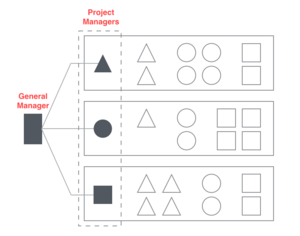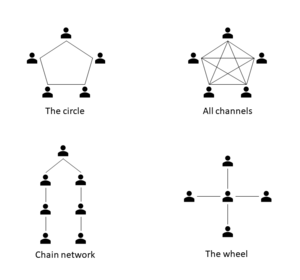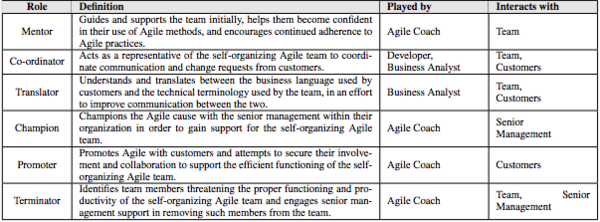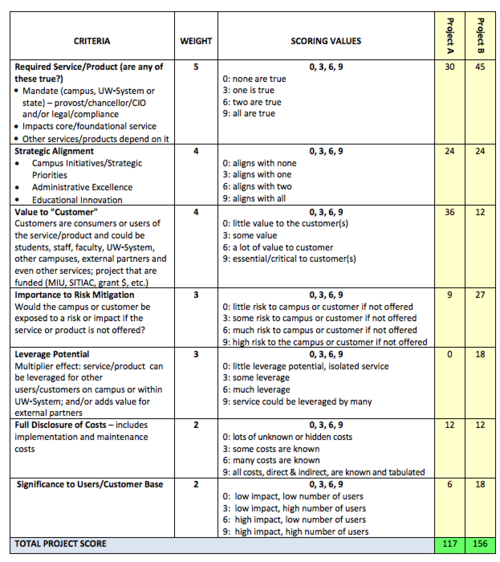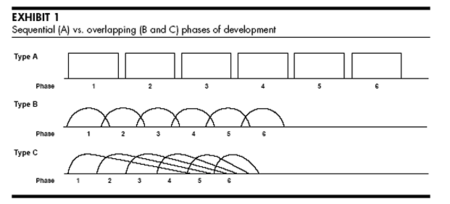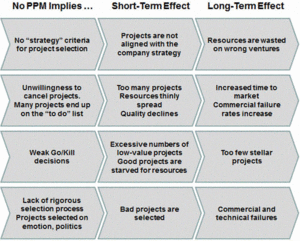Portfolio Management in a Startup
Developed by Lluís Ròmul Sala Vilar
Startups focused on Product Development, which have a relatively wide product/project portfolio, need to deal with scarce resources allocation. This issue is not trivial, as the lack of resources can lead to bottlenecks in the development phases, which are crucial for the survival of the Startup. Furthermore, this set of resources needs to be organised and merged with the processes involved on each stage of the development procedure in order to fit the Startup’s strategy.
This article aims to make a selection of the organisational structures, agile methods an tools that best suit early stage Startups, especially those focused on Product Development with a wide product/project portfolio. This article is intended to give a general framework for Project Portfolio Management (PPM) definition, distinctively for SME (Small-Medium Enterprise) Startups, consisting in one or several teams of people (from around 4 to 20-25 employees) working on the development of several products within an organisation. Notice that the author has made a selection of tools and methodologies based on theoretical and practical inspiration, meaning that the criteria for choosing these framework is based on academic papers, real case studies and personal experience. It is not in any case a universal “ultimate guide”, but a set of good practices to follow when designing and implementing a PPM system in a Startup. It is left for the readers’ criteria to evaluate the suitability of each tool, model or method in their own context.
Contents |
Background
A Startup can be seen as a business venture conceived to grow rapidly. In Product Development Startups, this potential growth is strongly related to speed-to-market, where the Product Development process is the Startup’s Achilles heel to accomplish this objective: It needs to be as smooth as a Swiss watch. But what has Project Portfolio Management (PPM) to do with speed-to-market? [1]
Project Portfolio Management is (by definition): the art and science of making decisions to manage a set of projects and/or programs to obtain the maximal efficiency and effectiveness in the use of their available resources, scheduling, deadlines, budget, quality requirements… to best achieve organisation’s operational and financial goals, while struggling with external factors like customer changing requirements, new regulations, etc. In other words, without a proper Project Portfolio Management, which should orchestrate the resources in the most optimal way, speed-to-market cannot be achieved.
There is not any “golden rule” for implementing the perfect Project Portfolio Management in any company. Every company is different: Different structure, different people, different teams, different strategies, etc. Therefore, it is a craftsman’s work to analyse all the different parameters and stakeholders related to it in order to design the most optimal system, that is, the one which best fits the company’s goals. Many tools and methodologies are available to help the manager to accomplish this goal, however, he/she has to be aware that is not an immovable design, it needs to be flexible and adaptive to changes, thus, dynamic, alive, constantly improved. [1]
Organisational Structure
Historically, startups organisational structure has been dominated by a Project Oriented structure (Figure 1), where the CEO can be seen as the Project Manager. As product portfolio grows, CEOs need to delegate the management of the different projects to others, that is, Project Managers. This form of organisational structure is the most suitable for Startups as the resource allocation trade-off is more agile and result-oriented than functional oriented structures. In contrast, its major weakness is that the lack of Functional Management can stagnate the organisation's capabilities in terms of specialisation and gain of expertise throughout the organisation; therefore, managers should strive to clarify the contribution of each project to the overall organisation’s strategy and try to create mechanisms to spread the knowledge in all directions.In figure 2, an example of the organisational structure for a Startup purely focused on developing (not too complex) electromechanical products is being shown. Six employees and the Team Leader form the core team, the Startup in itself. The Team Leader is the one responsible to allocate the different resources according to the different projects being developed. The grey area refers to outsourced departments and suppliers. Each of the employees is connected to one or several external consultants in order to expand their domain of knowledge for a specific project. [2]
This kind of structure has been adopted and adapted by large firms like Apple Corp., as it allows an increased flexibility of the use of resources, but also because it allows collaboration and an enhancement of cross-communication between teams, which it opens the door to innovation in the product portfolio of the company. An interesting example can be the organisational structure of Apple, as its former CEO (Steve Jobs) explains in the next video.
Project Portfolio Management
The Project Portfolio Management tools and methodologies allow managers to establish a set of processes that best ensure the optimisation of the capabilities and resources of the organisation. It provides a framework for risk mitigation, problem resolution, as well as a centralised point of view to plan and schedule resources, identifying the most suitable for each project/program.
But why is it portfolio management so important? According to Product Development Institute, which developed a study among Product Development’s industry to assess the perspectives of the different stakeholders involved, considered these 8 main reasons:
- To maximize revenues; to maximize R&D productivity performance; to achieve financial goals.
- To keep competitive advantage - to increase sales and expand markets.
- To allocate scarce resources optimally.
- To create the connection between project selection and business strategy: the portfolio is the articulation of the strategy; it must support the strategy.
- To achieve focus - Wise use of resources for the projects that really matters.
- To achieve balance - between long and short-term projects, high and low risk ones, in accordance with business’s goals.
- To better communicate priorities within the organisation, (vertically and horizontally).
- To become objective when selecting projects.
These statements are equally applicable for big corporations, SMEs and Startups, as the overall goal is the same.
Some of the focus areas for PPM methodologies, techniques and tools that can be helpful in the Startup’s environment are:
Pipeline Management: It is the ability to align the process of deciding which projects have to be conducted according to the organisation's strategy.
Resource Management: It focus on allocate the different set of resources in the most efficient and effective way.
Management of Project Change:The capture and prioritisation of change requests matching them with the available resources.
Financial Management: The financial department can estimate and manage the financial resources for a set of projects to align it with the different objectives and priorities of the organisation.
Risk management: As it names indicates, it focuses on evaluating the different threats (economical, quality, time) to minimise their impact on the overall strategy.
In this essay, a focus on Resource, Pipeline and Governance Management will be done.
Resource Management
Even that Startups' organisation is (by genetics) very flexible and adaptable to changes, a common issue in different types of Startups is certainly the lack of resources: human resources, financial resources, lack of material/equipment and/or knowledge. If not properly managed, it can jeopardise the success of any Startup in an early stage. It is therefore necessary, that CEOs handle this issue from a managerial perspective, in order to enhance effective and efficient organisational processes, which will consequently lead to more effective and efficient business processes. Portfolio Management ensures that the interrelations between all programs and/or projects are identified and the resources are being allocated in accordance of organisation’s strategy.
A good practice to start developing a Project Portfolio Management is to develop a resource matrix to identify all set of resources that the organisation possesses and organise them depending on different attributes (quantity, description, value, capability, competitive advantage, relations…). Thus, potential weaknesses can be identified and solved (or mitigated) by forehand and the decision-making processes for allocating those in the different projects can be done easily based on quantifiable measurements. In addition to project-level resource allocation, manager can also create “what-if” resource scenarios, and extend this view across the portfolio in order to dimension the overall amount and type of resources.
There are several methodologies intended to help managers to allocate resources and keep track of the development of the different tasks concerning a project. The Project Management Body of Knowledge guide (PMBOK from Project Management Institute)[3] defines a technique called resource leveling. This methodology is intended to resolve disagreements when allocating different resources on simultaneous projects where resources are scarce and overlap. This can be done using different software tools to help Managers accomplish the best ratio of allocation (maximum utilisation of resources with minimum waiting times and over costs).
Another popular tool to manage resources, focused on employees’ allocation, is the so-called Responsibility Assignment Matrix (RACI Matrix). Figure 3 shows a definition table of the RACI matrix . This matrix helps both managers and team members to clarify their role for a specific project by visualising the roles relationships. However, the Communication Management needs to be stated by forehand, so all the channels are specified and employees have a system to communicate internally and among other levels of the organisation.
Pipeline Management
Another critical aspect for the accomplishment of the strategic goals for a Startup is to be able to choose which projects/programs are most beneficial for the company. PMBOK recommends a methodology called Prioritization Matrixes for prioritising. These matrixes offer a way to classify by importance a set of different problems, which can be used for assessing projects to find the aggregated benefits.
A prioritisation matrix supports structured decision-making in the following ways:
- Helps prioritise complex problems with multiple criteria to establish importance’s degree
- Creates a method for evaluating options
- Makes the process objective
- Quantifies the decision with numeric rankings
- Is adaptable for many priority-setting needs (projects, services, personal, etc.)
By developing this matrix, managers can objectively assess the importance of a project related to the overall strategy of the portfolio. For that, they need to establish the appropriate criteria from different perspectives: Economical, quality, resources, potential market, advertisement, etc. are just some examples of the qualities that a project must accomplish to be attractive in terms of common goal achievement. Nevertheless, the interdependency between them and the strategy needs to be properly assessed[4]
. An example of a prioritisation matrix with a 2-project assessment based on different quantitative criteria is being shown in figure 4.
Governance
A well-defined and impeccably implemented governance strategy is crucial for an organisation managing a wide portfolio of projects, programs and products in order to guide the execution of the portfolio into success, that is, the business’ strategy of the company. It is not less important in the case of a Startup. Even that in early stage Startups the non-definition of the processes, the mix of roles, reuse of resources, lack of documentation, etc., may seem a bit blurry from employees’ point of view, a Startup that does not have a governance strategy it is condemned to failure, but not having a governance strategy can also be a governance strategy, that is the case of self-organising project teams. Self-organising teams, also known as agile teams, are a methodology for creating autonomous development teams with high performance. This is achieved by giving the team the responsibility of its own organisation and internal processes, but under a common organisational framework. The team members’ roles are distributed in 5 positions. Figure 5 shows the different roles, descriptions and interactions. It is especially useful in Startups, as the limited number of employees does not allow in most cases, to have dedicated project managers for all its projects. These kind of organisational processes are strongly related to the product development processes. While traditional development phases were handled as lineal phases (creating a big dependency between the different stages of the development), this new approach, presented by Takeuchi and Nonaka[5] , which are considered the founders of the [SCRUM Method], change the way these phases relate. Figure 5 shows the difference between the traditional sequential approach (A), the overlapped in the borders approach (B) and the extended overlapped approach (C). This new methodology allows companies to develop new products faster and in a more flexible way. It also enhances new kinds of learning and thinking across the organisation.
That is why Startups have so much to win and so little to lose: The dynamics and synergies created among the team is an ecosystem very difficult to replicate in a big corporation, as the organisational rules are usually strict and immovable. There are several examples where this form of organisation was successfully implemented in big corporations (Honda, Canon, Toyota, 3M, etc.), boosting their development efficiency and effectiveness.
Even that the individual capabilities of the group members are very important for the overall success, it is critical that the team acts as a whole, sharing knowledge, ideas, points of view… in order to fertilize the field for innovation, but also to grease and adjust the wheels of the development phases into its optimal, that is, synchronise their processes to achieve a trade-off between shortest development time, highest quality and minimal development costs.
Effects of not having a Portfolio Management strategy
As stated before, a good Portfolio Management strategy needs to be aligned with the overall business’ strategy of the company in order to increase the percentage of successful projects, programs and portfolios within the organisation’s goals, but what happens when this strategy it is not well selected, planned and/or executed?
Project managers and functional managers fight for the use of resources. This is an obvious outcome for a bad Portfolio Management, especially for Start-ups with low resources. In a scenario with several projects and programs going on, the lack of a higher overview (an entity who works to establish a mechanism to allocate the resources when needed according to the prioritisation of the different projects), can lead to a disastrous management of the available resources, creating disputes between the different managers and stagnating the development of vital projects. Furthermore, this competition for resources among employees leads to a bad working environment, demotivating employees and decreasing the overall performance. This constant lack of resources has another influence on the projects, that is, the lack of quality on final products. [6]
The prioritisation of projects is changing frequently. Since there is not any overall roadmap on which projects are most vital for organisation’s strategy, resources are constantly reassigned, minimising its utilisation and performance and increasing the turnover of the employees and the systems used for developing the different projects. This leads to increasing development costs, which are difficult to justify to stakeholders.
As a confluence of the previous statements, the organisation does not achieve the desired performance, quality, deadline and/or budget; it will (without question) affect the business’ strategy and therefore, will constrain the economical development of the company. A sum-up table showing the effects of not having a PPM is shown in figure 6.
Conclusions
There are infinite methodologies, techniques and tools designed to help managers to create a good Project Portfolio Management system. Each one of them can be used in different scenarios, but the selection of the most suitable techniques needs to be done wisely. In this essay, the author has tried to show the tip of the iceberg in terms of organisational procedures for Startups. In today’s fast and fierce competitive landscape, Startups have the advantage that its ecosystem allows a more dynamic adaptation to market changes, but their success is strongly related on how they perform their development processes. As the British writer Frank Muir said, “Strategy is buying a bottle of fine wine when you take a lady out for dinner. Tactics is getting her to drink it.”
References
- ↑ 1.0 1.1 Rajegopal, Shan; Philip McGuin; James Waller (2007). Project Portfolio Management: Leading the Corporate Vision
- ↑ Product Design and Development, Ulrich, Karl, 2012
- ↑ PMI Executive Guide to Project Management http://www.pmi.org/~/media/PDF/Publications/PMIEXEC06.ashx
- ↑ Project prioritization: A structured approach to working on what matters most, C. Gosenheimer, 2012
- ↑ The New New Product Development Game, Takeuchi and Nonaka, 1986 https://hbr.org/1986/01/the-new-new-product-development-game
- ↑ 'EPMC, Inc.; Michael J. Stratton; Mark Wybraniec; Sarma Tekumalla; Mark Stabler; San Retna; Diane D. Miller; Michael Gosnear; Stephen Jenner; Michael Mee; Michael M. Menke (2009). Project Portfolio Management: A View from the Management Trenches. Wiley.
Annotated Bibliography
The New New Product Development Game, Takeuchi and Nonaka, 1986: In this article, the authors discuss that speed and flexibility in product development has to be emphasised. It is considered to be one of the basis the new stress that in speed and flexibility during the development of new products. This article is considered to be the one of the origins of the Scrum development framework.
Porftolio Management for New Products, Cooper, Edgett & Kleinschmidt, 2002: This paper is an academic study on best practices used in Portfolio Management in 30 leading companies in the field of product development. The author, Dr. Robert G. Cooper is a recognized and influential researcher on business innovation.
Product Design and Development, Ulrich, Karl, 2012: This book mixes different perspectives on product development (marketing, design and manufacturing) to show the current state of the art on product development processes in an organisational context.
Project prioritization: A structured approach to working on what matters most, C. Gosenheimer, 2012: It is a guide describing the approach to develop a prioritization matrix to evaluate decisions related to selection of project. It is written by the division of Enrolment Management from the University of Wisconsin-Madison.
The standard for portfolio management, PMI, 2008: It is a compendium of the best practices carried away by a large number of certificated Project Managers around the world. The Project Management Institute (PMI) is the world’s leading professional organisation of Project, Program and Portfolio Managers. It works to develop standards and provide accreditation in the Project Management field.
